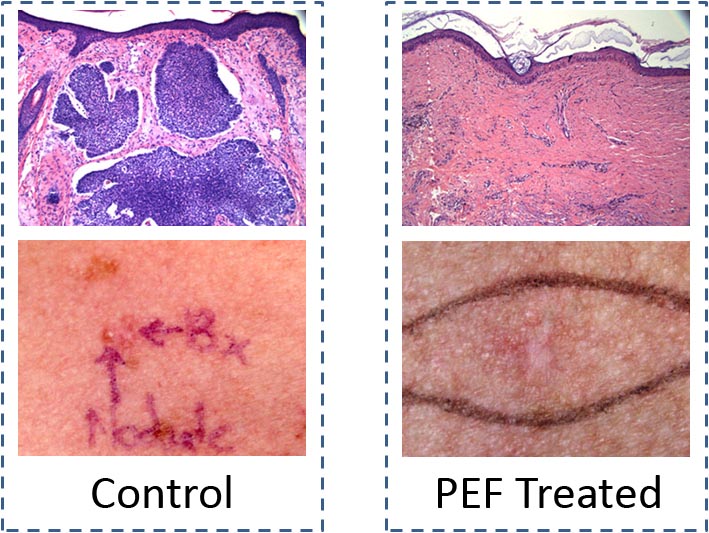Biomedical
Pulsed power systems have been instrumental in the development of a number of biomedical devices and procedures. Electrical pulses have been shown to induce apoptosis (programmed cell death) in cancer cells, and pulsed power systems are currently being developed to treat various types of cancers. Current research is largely focused on the treatment of external cancers since the electrical pulses can be applied using a simple needle electrode system, but pulsed power systems that generate picoseconds pulses may eventually be used with broadband focusing antennas to treat internal tumors. Pulsed power systems have also been used in combination with various plasma actuators to generate cold plasmas that have proven to be effective for endodontic disinfection and wound healing.

Pulse characteristics typical for this application are 1-100 ns with an amplitude between 1-10 kV, designed for a low-impedance (50 Ω load).
Pulse generators for this application: SSPG-300, Custom
References:
-
Garon, E.B., D. Sawcer, P. T. Vernier, T. Tang, Y. Sun, L. Marcu, M. A. Gundersen, and H. P. Koeffler, “In vitro and in vivo evaluation and a case report of intense nanosecond pulsed electric field as a local therapy for human malignancies”, Int. J. Cancer 121:675-682 (2007).
-
Vernier, P. T., Sun, Y., and Gundersen, M. A., "Nanoelectropulse-driven membrane perturbation and small molecule permeabilization," BMC Cell Biology, vol. 7, p. 37 (2006).
-
C. Jiang, M. Chen, C. Schaudinn, A. Gorur, P. T. Vernier, J. W. Costerton, D. E. Jaramillo, P. P. Sedghizadeh, and M. A. Gundersen, "Pulsed Atmospheric-Pressure Cold Plasma for Endodontic Disinfection," IEEE Trans. Plasma Sci, April 2009.
-
K. H. Schoenbach, X. Shu, J. T. Camp, and J. F. Kolb, "Focusing impulse radiating antenna for medical imaging," in Plasma Science, 2008. ICOPS 2008. IEEE 35th International Conference on, 2008, pp. 1-1.
